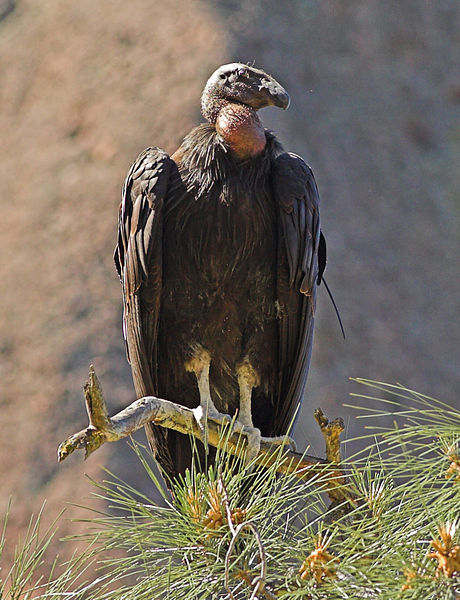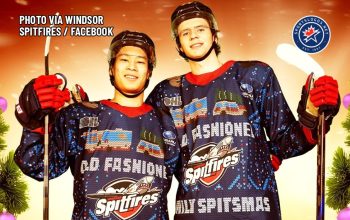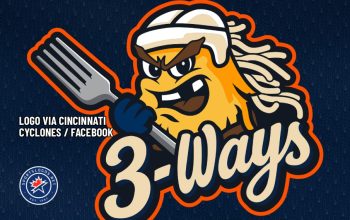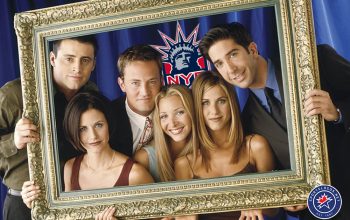When sports teams set about choosing a mascot, the conversation usually does not begin with, “What’s the ugliest scavenger you can think of?” But in the case of the Condors of Bakersfield, California, an affiliate of the Edmonton Oilers in hockey’s minor league ECHL, that ugly scavenger was just the right choice.
“When they first named the team the Condors, our owner at the time Jonathan Fleisig said, the two primary criteria were to be unique and something indigenous to the area,” said Ryan Holt, the team’s play-by-play guy and director of media relations and broadcasting. (If you want to hear some excellent examples of Ryan’s work, just call the Condors and ask to be put on hold.)
And yes, it’s true, the condor is not the sleek predator you might expect to see adorning an athletic team’s jersey. “It’s not like a hawk,” Holt said, “where people think it’s going to kill things.”
But despite its aesthetic shortcomings, the team and the town have come to embrace their mascot. “The condor itself isn’t a very good-looking bird, when looked at up close,” Holt said. However, he continued, “It kind of represents this kind of gritty, tough area of Bakersfield.”

The California condor—one of two species of the bird—lives in the southwestern United States. (The other species is the Andean condor, which lives in South America.) Condors are giant (North America’s largest flying bird), majestic (they soar high in the sky looking for food), and up close, uniquely ugly (seriously, look at it).
They can live for 60 years or longer, are monogamous, and usually lay only one egg every two years. They are officially listed as endangered, with loss of habitat and lead poisoning among the chief threats they face. Holt likens the ability of actual condors to survive in adverse conditions to the team’s ability to survive in California’s San Joaquin Valley.
“The condor itself, to be able to survive out in the wild on its own is pretty spectacular,” he said. “We’ve survived. We’re 17 years in minor league hockey in Bakersfield, California. We had an NHL team call us last year to buy us. Who does that?”
Further, he sees the bird’s return from the brink of extinction as a metaphor for the city of Bakersfield itself. “Bakersfield, the town itself has grown the last 20 years. It used to just be the downtown, now it’s spread. So in a way, the team has grown with the city,” Holt said. “We’re going strong, and the condors are going strong now too.” (In 1987, there were no condors living in the wild. They have since been reintroduced and while they are still endangered, they are widely considered to be making a comeback.)
 The logo, which depicts a condor holding a hockey stick, was developed by Susan Davidson, wife of then-president Kent Johnson, and Sean Pruitt, then the art director of Kent Johnson’s company, Massive Graphics. Just a year after it was unveiled in 1998, the Condors’ logo—the one with the green background that the team used until the 2006/07 season—was named the best in hockey by the Professional Hockey Journal.
The logo, which depicts a condor holding a hockey stick, was developed by Susan Davidson, wife of then-president Kent Johnson, and Sean Pruitt, then the art director of Kent Johnson’s company, Massive Graphics. Just a year after it was unveiled in 1998, the Condors’ logo—the one with the green background that the team used until the 2006/07 season—was named the best in hockey by the Professional Hockey Journal.
While some elements of the team’s identity have changed over the years and they have worn numerous uniforms, there has been one constant since the team’s inception in 1998.
“The bird itself has never changed,” Holt said. “We’ve changed colors, we’ve changed what the bird has worn as far as the hat, or what the bird has held throughout the years for specialty jerseys. But the bird itself has remained unchanged in all our logos.”
While the bird in the logo approximates the ugliness of a real condor in all of its wrinkly, bald glory, the team’s mascots are less realistic, and less terrifying. Colonel Claw’d (on the left) is loosely name after Colonel Thomas Baker, who founded Bakersfield in the 1800s, and Baby Cal, the face of the team’s kids’ club, is named after the state of California.
The Condors take an active role in educating the community about the considerable conservation efforts on behalf of the bird, including having the Las Vegas-based “Bird Man,” Joe Krathwohl of The Condor Fund, demonstrate live birds in the arena during games. It was on one of these occasions in February 2013 when a condor named Queen Victoria infamously escaped and ran amok on the arena’s ice.
“We’ve raised money for his conservation efforts through his condor fund,” Holt said. “Fans can come up and take pictures, make donations, and buy T-shirts. They’ve kind of turned into celebrities. Queen Victoria has kind of become a celebrity out here.”
Another way the team raises money for charity is through specialty jerseys, which they wear three times a year. The team made headlines earlier this year when it announced that players would wear Seinfeld-style puffy shirt jerseys. I asked what the connection was between puffy shirts and either condors or Bakersfield, and Holt explained that when you have to come up with three specialty jerseys a year for 17 years, it’s okay just to do something because it’s entertaining.
“We just enjoy having fun and we wanted to have fun with something,” he said. “We’ve done some really cool-looking jerseys that have taken off and haven’t been gimmicky at all. Obviously, this one is gimmicky.”
I asked if the jerseys would actually be puffy, and sadly, they will not be. “We wish we could do something like actual puffy jerseys,” he said, “but you know, we’ve got a hockey game to play, too, I guess.”
As a sports mascot, the unattractive, carcass-eating condor is somewhat of a surprising choice. But is it any more surprising than a hockey team that plays in a city most notable for its brutally hot temperatures? “We’ve certainly become iconic in California,” Holt said, “and I think around the hockey world and minor sports.”
The landscape of minor league hockey is littered with teams that have come and gone over the years, and it would have been hard to predict the success of the Bakersfield Condors. But for 17 years, the Condors have done what scavengers do—they’ve circled overhead, outliving and outlasting, and making the most of what their environment provides.














